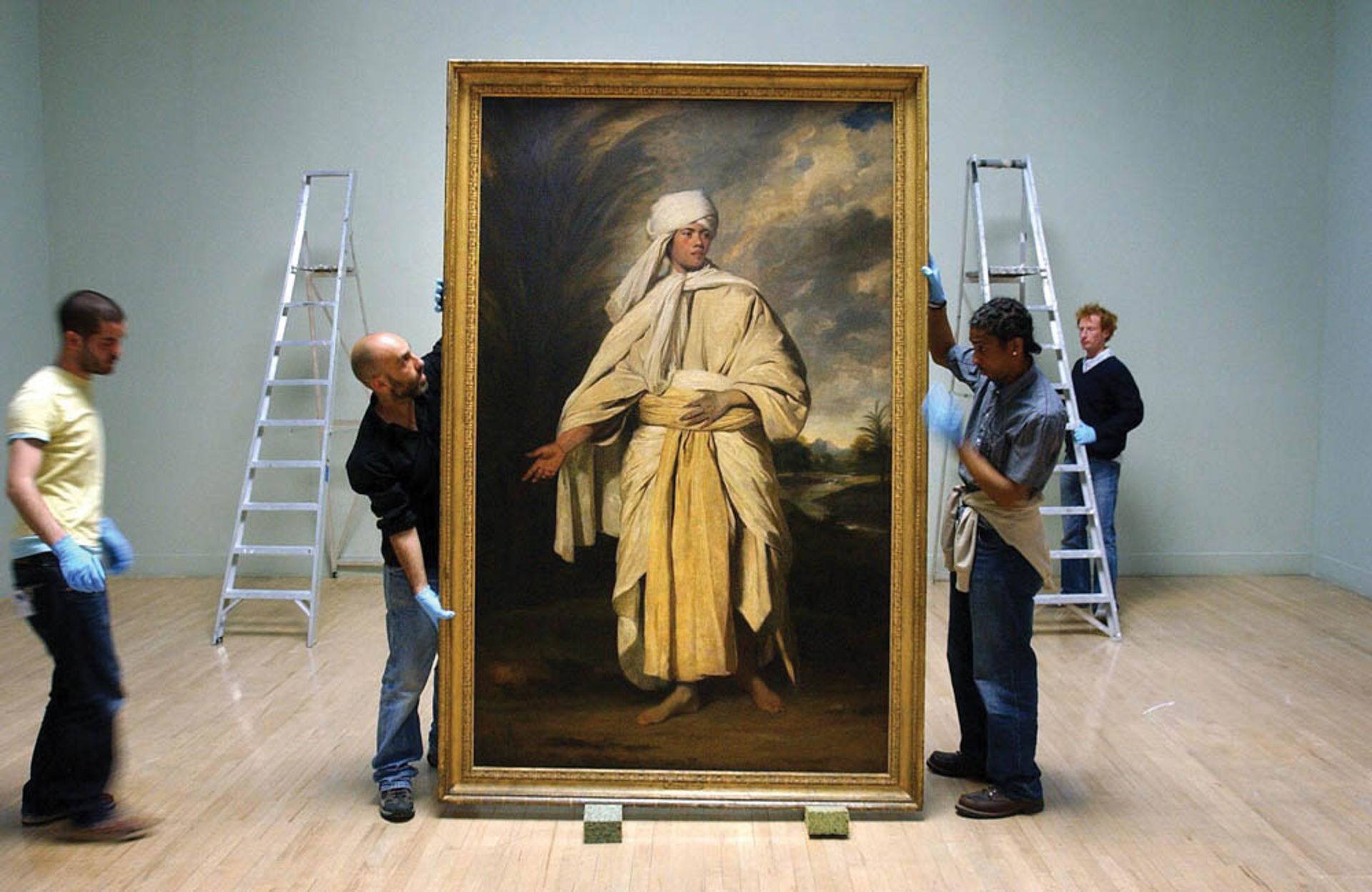Last month, more than 300 attorneys, museum workers and art law enthusiasts gathered in Philadelphia and via webinar for the popular annual conference on legal issues in museum administrationorganized by the nonprofit American Law Institute and co-sponsored by the Smithsonian Institution.
Among other topics under discussion from May 17-19, experts offered art law updates on regulatory and legislative changes, litigation, taxation, copyright and trademarks, NFTs ( non-fungible tokens), ethical returns, international loans, and the use of social media to engage with audiences. Three topics provided particularly rich material for discussion.
Art co-ownership
When museums team up buying a work of art will require contracts to specify who does what. In April, the National Portrait Gallery in London and the J. Paul Getty Museum in Los Angeles announced their joint purchase of Portrait of Mai (Omai) (circa 1776) by Joshua Reynolds. The institutions will share the care of exhibition, research and conservation of the work.
“The only way to keep the painting in the UK was to decide on joint ownership,” which the Getty decided to participate in, Margot Stokol, assistant general counsel for the J. Paul Getty Trust, said at the conference. She added that complications in negotiating the condominium could arise if there are more than two owners, if lenders have imposed restrictions or if there are foreign owners. “Parties generally expect possession to be equal to their ownership interest. If there is a collection of objects, is it divided? Is there rotation? What is best for the object?

by Joshua Reynolds Portrait of Omai seen here in preparation for an exhibition at Tate Britain in 2005 Credit: PA Images / Alamy Stock Photo
Hope O’Keeffe, senior associate general counsel at the Library of Congress (LOC) in Washington, DC, said that when planning a joint purchase, the parties could determine “who will do the inspection” – if the receiving museum films the unpacking, for example?
In 2017, an old scrapbook containing rare photographs of civil rights activists Harriet Tubman and John Menard was bought by the LOC in conjunction with the National Museum of African American History and Culture at the Smithsonian Institution (SI). The agreement between the IS and the LOC specified that custody, preservation costs and management would be shared consistently with the parties’ 50% ownership, that the album would rotate between them for exhibition, and that they would mutually agree on loans, joint lines of credit and other details.
Deontology of corporate lawyers in museums
“The trope we’re all used to is that nobody likes lawyers, but in the 1950s and 60s people liked lawyers, who were seen as heroic figures in maintaining democracy after World War II. , said Meghan Delaney Berroya, associate general counsel. at IS. “Then we messed it up,” she said, with the Watergate scandal exposing the poor behavior of many lawyers. This has resulted in tougher professional ethics rules for lawyers, including the addition of basic requirements that result in disciplinary sanctions.
The rules also outline what attorneys can do: Berroya pointed to Rule 2.1 of the American Bar Association’s Model Rules of Professional Ethics, which states that in advising a client, an attorney may refer not only to the law , but to other relevant considerations “such as moral, economic, social and political factors”. For what lawyers cannot do, she cited Rule 4.2, which governs dealings with people other than the lawyer’s client who have their own lawyer.
“The in-house counsel frequently encounters these situations,” Berroya said. For example, a museum employee may “want the lawyer to jump on the phone and solve [a] problem with a third party. But if the third party has an attorney, the museum attorney is not allowed to call the outside party because that person’s attorney must be on the call. The problem is that if both lawyers respond to the call, “it may bring the situation to a different level and make it harder to resolve.”
Kimberly Wong, associate general counsel at the J. Paul Getty Trust, warned attorneys not to copy their clients on emails to opposing counsel. “Your client could answer all and waive attorney-client privilege,” she said, which does not protect client statements if parties other than the client’s attorney are included. The client could also unwittingly “reveal confidential information” to opposing counsel. Wong advised that instead of copying the client, the attorney should write only to opposing counsel and then pass it on to the internal client.
Work with lawyers and human resources to advance diversity
Culture change within institutions “is a shared job”, with “three main groups having the most impact” – human resources, the legal department and the DEIA (diversity, equity, inclusion and accessibility) team of the museum – said Mikka Gee Conway, Head of Diversity, Inclusion and Belonging Officer at the National Gallery of Art.
Sheronda Whitaker, associate director of human resources and director of diversity at the Barnes Foundation, described recent DEIA initiatives at the Philadelphia institution. The Barnes conducted a cultural assessment, adopted programs including anti-racism training and DEIA training, and updated its code of conduct and employee handbook, including the statement: “Diversity, Equity , inclusion and accessibility are necessary elements of all our activities”. It means “at all levels, from exhibits to community engagement” and otherwise, she said. The Barnes have also hired a recruiting and training manager “to diversify the workforce in all areas of our institution,” Whitaker added.
An accountability section in the code of conduct sets out disciplinary actions for violations and outlines reporting steps, including anonymous channels. As an example of implementation, the cultural assessment identified areas where Barnes could improve, such as making the need for transparency “loud and clear” and “especially around our finances,” said Whitaker. The museum solved this problem by including financial information in regular staff meetings and by adding training provided by its finance department. She added: “We heard what people said and took it very seriously.”
